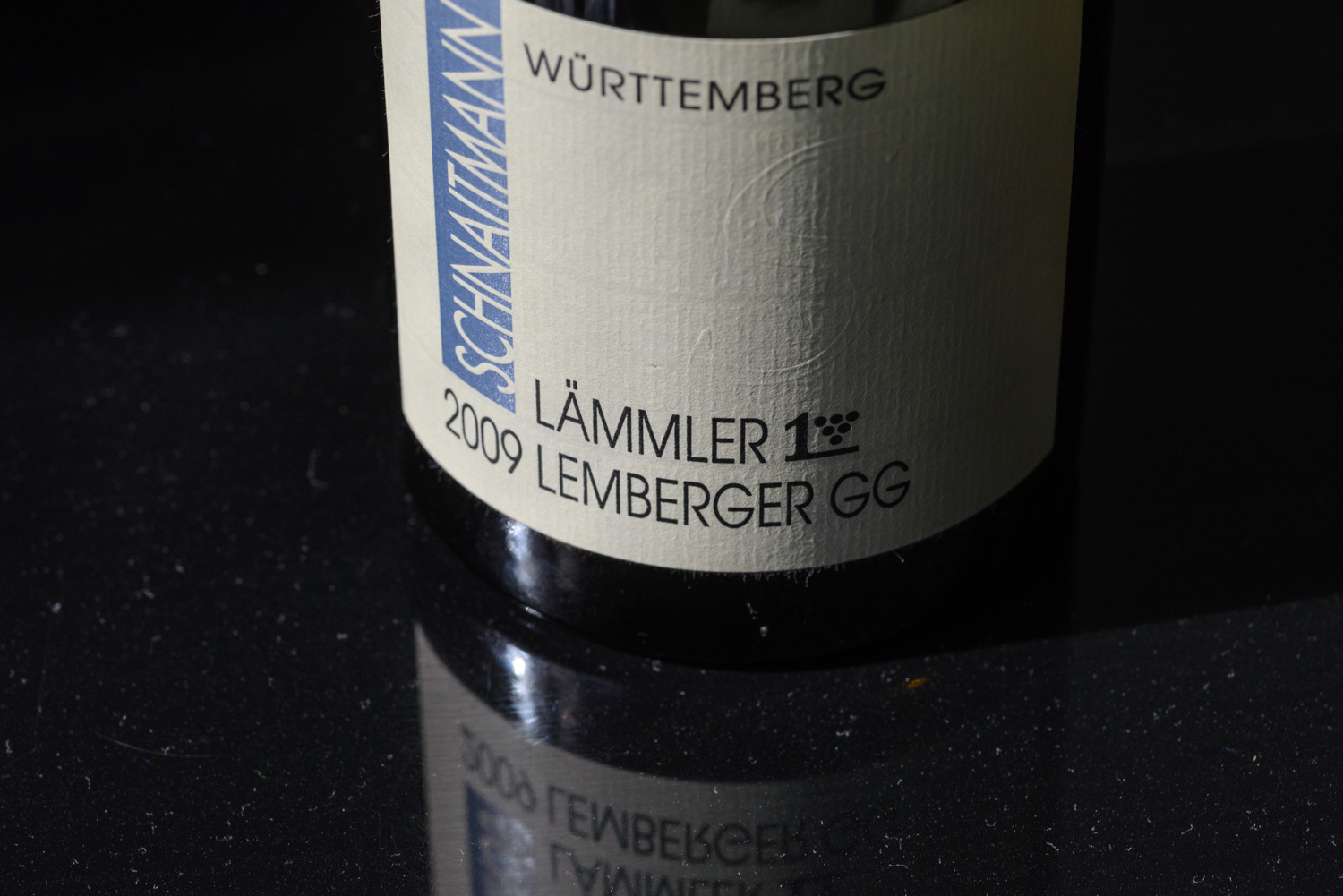Schnaitmann, Fellbacher Lämmler, Lemberger GG, 2009
Württemberg is not one of the wine regions the average wine drinker will know much about; most likely they will not even have heard about it. Now, I could tell you a that it is a rather interesting area - a red wine making region dominated by a plethora of growers associations and rivers - but the main reason I like to drink wines made by the local tribe of the Swabians is that I was born there. In fact, as a child I played not far from Rainer Schnaitmann's Lämmler vineyard. 
So every now and then I need to go back, to check what my homies are up to.
Württemberg is red wine country. Over two thirds of the wines made there are red - in particular the local champion Trollinger, but also Pinot Meunier and Blaufränkisch, locally known as Lemberger. Another over-two-thirds Württemberg story is about cooperatives: some 70 growers association own over two thirds of vineyard land in Württemberg. Fellbach has one of them, the Fellbacher Weingärtner who date back to the middle of the 19th century when over 500 wine growers worked the vineyards around Fellbach. At that time red and white grapes were simply thrown together, no matter where they were grown. As the style of part-time winemaking was no longer profitable, the Weingärtner ("wine gardeners") began to separate red and white grapes and to charge different prices for different sites. Today there are still around 270 members in the association, looking after 170 ha of vineyard land around Fellbach.
The litre bottle of cheap Trollinger, grapes grown in a farmer's back garden overlooking the river Neckar is a standard image of Württemberg wine. Rainer Schnaitmann's Lembrger does not quite fit that image. We are looking at a complex, substantial red made from Blaufränkisch grapes from a vineyard classified as GG, the German equivalent to a grand cru wine - and the price reflects that, sadly. I opened it recently to support a stew made with Swabian egg noddles called Spätzle, and to indulge in childhood memories of course. I was very pleased with the colour, a rather pretty dark black cherry, and a spicy and fruity bouquet: hints of liquorice and ground paprika mixed with earthy, herbal aromas, aniseed, coffee and tobacco and lovely blackcurrant and mixed berries. Oh, and a bit of meat broth. Many of these aromas were present in the taste, although the ripe fruit was a little less prominent and the oaky notes were more like smoky wood and cocoa. I liked the earthy mineral, there was enough acidity to keep things interesting and the tannins came out in a long finish. This was all rather nice but it felt there should be a little more depth, as if the wine was hiding something behind the oak layer - I got the feeling I had perhaps opened it at the wrong time. Now don't get me wrong, it was still very good, but did not quite deliver the excitement the price was hinting at. So if you are lucky to have a bottle in your cellar, put it away for a couple of years, or maybe even four or five, and then let us know. I think there is good ageing potential here, something I am not used to from Swabian red - being surprised is, I think, a good outcome for a trip down memory lane!

Comments
I remember being pretty
I remember being pretty impressed by some of the Lembergers I tasted at a Grosses Gewächs release tasting a couple of years ago.
There is, however, a familiar German red wine story. All too often the super premium wines are super oaky. The basic wines are generally more drinkable, somehow more honest without the oak schminke. Not just a Württemberg or a Lemberger (or even German) problem of course.
I have to say I don't think these wines will age gracefully, the fruit falls apart and the oak never really integrates.
Hello German wine makers, less barrique please.
In reply to I remember being pretty by Andrew Connor
barrique
I have run into a few of those myself, especially from Swabian producers. Overall I haven't found it a significant issue though, but it is always a question of sample size I guess. I am with you on careful barrique use though!